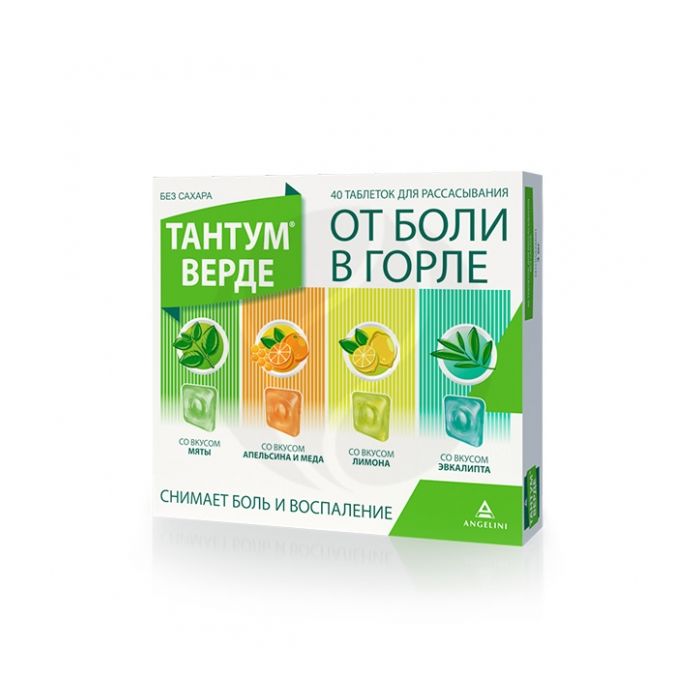Tantum Verde tablets d / rassas. multi-taste 3mg, no. 40
Expiration Date: 05/2027
Russian Pharmacy name:
Тантум Верде таблетки д/рассас. мультивкус 3мг, №40
Throat tablets have the following indications for use:
1. Inflammatory diseases of ENT organs:
Pharyngitis
Laryngitis
Tonsillitis (tonsillitis)
2. Inflammatory diseases of the oral cavity:
Gingivitis
Glossitis
Stomatitis
Candidiasis
Periodontal disease
Calculous sialoadenitis
3. Surgical interventions and injuries
4. Dental procedures
Locally, after eating. Adults (including elderly patients) and children over 6 years old: 1 lozenge 3 times a day. Keep the tablets in the mouth until they are completely dissolved. Do not swallow. Do not chew. Do not exceed the recommended dose. For children from 6 to 12 years old, the use of the drug is carried out under the supervision of an adult.
The duration of treatment with TantumЃ Verde tablets should not exceed 7 days. If after treatment within 7 days there is no improvement or new symptoms appear, you should consult your doctor
Active ingredient benzydamine hydrochloride - 3mg
Auxiliary ingredients: isomaltose 3183 mg, racementol 4 mg, aspartame 3.5 mg, citric acid, monohydrate 2 mg, mint flavor 5 mg, lemon flavor 1.5 mg, quinoline yellow dye (E104) 0.035 mg, indigo carmine dye (E132) 0.015 mg.
Benzydamine is a non-steroidal anti-inflammatory drug (NSAID), belongs to the indazole group. It has an anti-inflammatory and local anesthetic effect, has an antiseptic effect against a wide range of microorganisms.
The mechanism of action of the drug is associated with the stabilization of cell membranes and inhibition of prostaglandin synthesis. Benzydamine has an antibacterial and specific antimicrobial effect due to the rapid penetration of microorganisms through the membranes with subsequent damage to cellular structures, disruption of metabolic processes and cell lysosomes.
Has antifungal activity against Candida albicans. It causes structural modifications of the cell wall of fungi and their metabolic chains, thus interfering with their reproduction, which was the basis for the use of benzydamine in inflammatory processes in the oral cavity, including infectious etiology.

